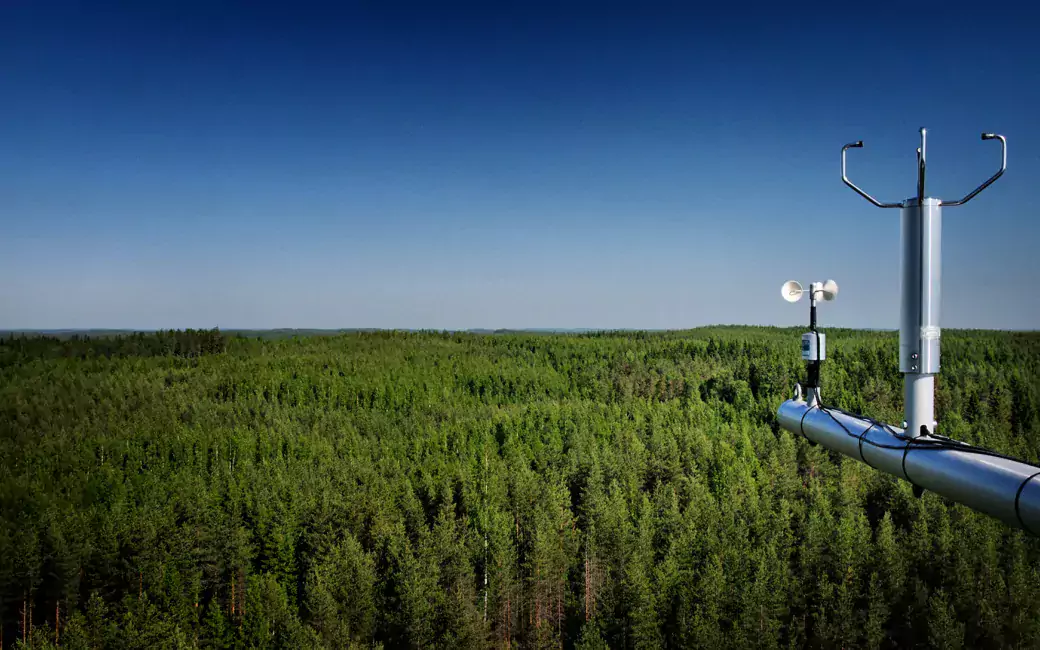Understanding of atmospheric particles remains inadequate, even though they affect the accuracy of climate change predictions. Reviewing aerosol research conducted in the 2000s, researchers propose that the smallest particles especially should be increasingly effectively considered in predictions.

While knowledge of the mechanisms and dynamics of growth of atmospheric nanoparticles has increased enormously in the 21st century, extensive models predicting climate change do not yet consider with enough accuracy the effect of nanoparticles on cloud formation and, consequently, Earth's radiative balance.
This is evidenced in a review published in the esteemed Reviews of Modern Physics journal, in which researchers from the University of Helsinki, TU Wien, Stockholm University and the Finnish Meteorological Institute compiled research on atmospheric nanoparticles, or aerosol particles, conducted over the past two decades.
In particular, the researchers examined how the formation and growth of aerosol particles of under 25 nanometres in size are linked to predicting the formation of cloud droplets and how aerosol data could be utilised increasingly effectively in climate predictions.
Particles affect the reflectance of cloud cover
Aerosol particles influence the climate in two ways: first, by directly affecting how much sunlight ends up on the surface of Earth, and second, through the formation of clouds.
Clouds are composed of small droplets, which form with the condensation of water on the surface of aerosol particles in the air. Without aerosol particles, cloud droplets would not form without an ultra-high saturation ratio.
The quantity and composition of aerosol particles determine the properties of the cloud cover, including the amount of sunlight reflected by the clouds back into space. If the amount of water in the air is constant, large quantities of aerosol particles result in a smaller cloud droplet size but a larger total area of droplets. This also results in brighter clouds that scatter light more effectively.
Sulphur dioxide, ammonia, certain oxygenated hydrocarbons and other emissions caused by human activity also generate new particles in the atmosphere. The formation of these particles raises the atmospheric particle concentration above levels typical of no human activity. These particles also grow large enough to affect the formation of clouds and, ultimately, the climate.
The growth of aerosol particles is a sensitive process affected by meteorological conditions, the gases, vapours and particles in the air. Most often, the formation and growth of new particles in the atmosphere are seen on clear, sunny days. In connection with this, certain types of vapour molecules form clusters on which other vapours can condense, producing particles sufficiently large to contribute to cloud formation.
Determining the role of vapours next
In the review article, the researchers' aim was to bridge the gap between experimental research and modelling, minimise uncertainty related to particle growth, and provide means for better climate modelling.
One example of uncertainty associated with particle growth is the precise experimental determination of their growth rate at several measuring sites around the world. This applies particularly to particles under five nanometres in size. Furthermore, uncertainty is brought about by the more detailed physical and chemical description of particle growth in global climate models.
"The latest experimental results provide much better understanding of the formation and growth of various particles, yet they cannot be applied as effectively as possible in climate models, as their precise modelling requires too much computing power. Accounting for these experimental findings in models can better predict how human activity affects air quality and the climate. Once the models are more accurate, they predict better the interrelated effects of various human perturbations to the climate system," says Postdoctoral Researcher Runlong Cai from the Institute for Atmospheric and Earth System Research INAR at the University of Helsinki.
"Next, it will be crucial to determine the role of the various vapours involved in particle growth, as well as to more accurately model these vapours and growth mechanisms in climate models," says University Researcher Juha Kangasluoma from INAR.
Publication:
Stolzenburg, D., Cai, R., Blichner, S., Kontkanen, J., Zhou, P., Makkonen, R., Kerminen, V.-M., Kulmala, M., Riipinen, I., & Kangasluoma, J. (2023). Atmospheric nanoparticle growth. Rev. Mod. Phys., 95, 045002.






